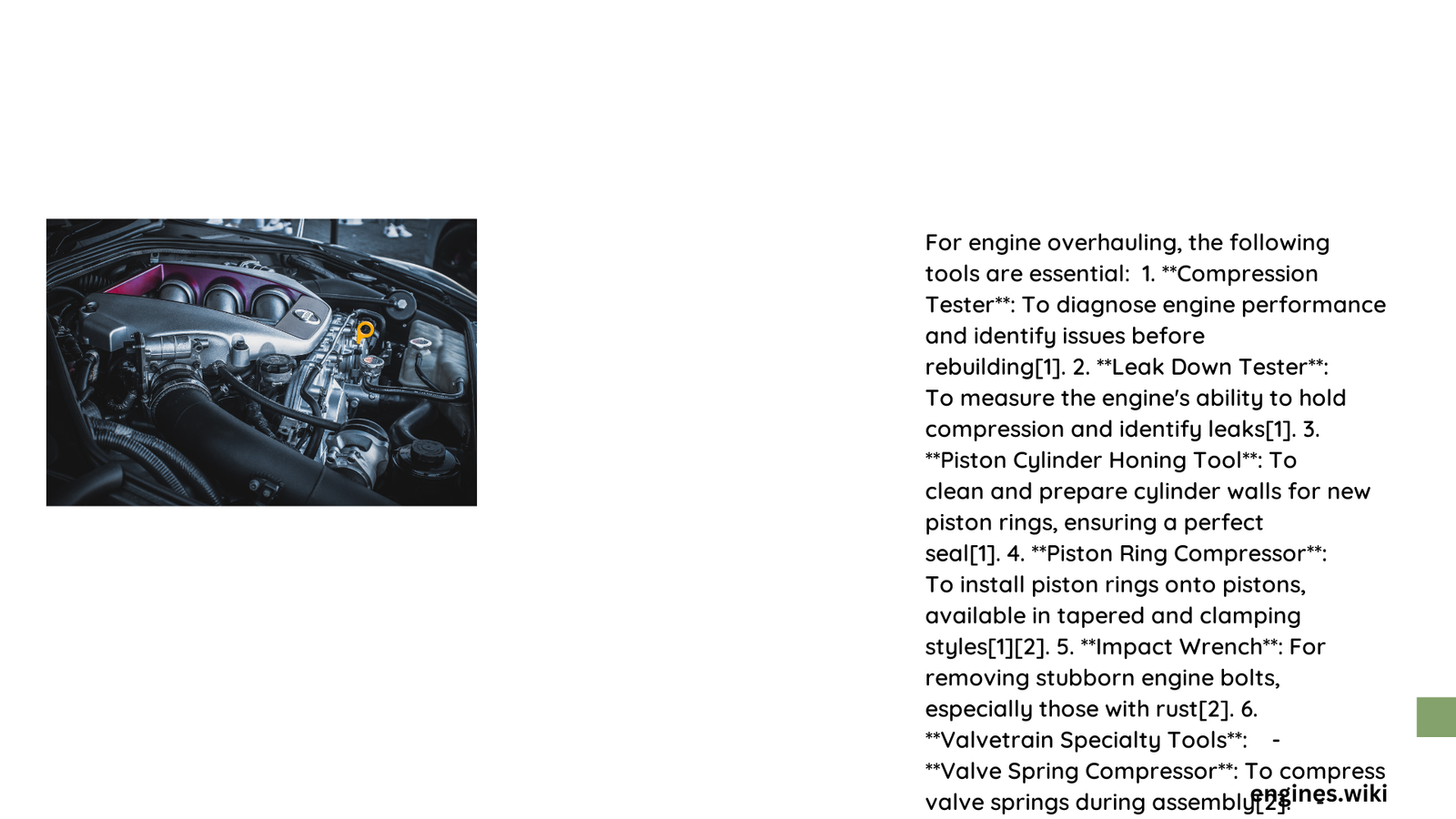Engine overhauling requires a sophisticated array of precision tools designed to disassemble, measure, inspect, and reassemble complex engine components. Professional mechanics rely on specialized equipment ranging from engine stands and torque wrenches to micrometers and valve spring compressors, ensuring accurate measurements, proper alignment, and optimal performance restoration during comprehensive engine rebuilding processes.
What Are the Primary Tools for Engine Overhaul?
Essential Measurement Instruments
| Tool | Purpose | Precision Range |
|---|---|---|
| Digital Micrometer | Precise part measurements | ±0.001mm |
| Feeler Gauges | Clearance verification | 0.05-1.0mm |
| Dial Bore Gauge | Cylinder diameter check | ±0.01mm |
Professional engine overhauling demands meticulous attention to dimensional accuracy. Each measurement tool serves a critical function in ensuring engine component compatibility and performance.
Key Mechanical Tools
Engine Support and Rotation
- Engine Stand: Provides stable, rotatable platform
- Weight capacity: 500-1000 lbs
- Adjustable mounting points
- 360-degree rotation capability
Disassembly and Assembly Tools
- Torque Wrench
- Range: 10-250 ft-lbs
- Accuracy: ±2-3%
-
Digital and mechanical variants
-
Valve Spring Compressor
- Universal and model-specific designs
- Hydraulic and manual operation
- Supports various spring sizes
Advanced Cylinder Reconditioning Equipment
Precision Machining Tools
- Ridge Reamer
- Cylinder Honing Machine
- Valve Guide Installer
- Piston Ring Compressor
Professional Considerations for Tool Selection
Factors Influencing Tool Choice
- Engine manufacturer specifications
- Vehicle make and model
- Complexity of rebuild
- Budget constraints
- Frequency of use
Cost and Investment Strategies
Tool Kit Price Ranges:
– Entry-level: $500-$1,500
– Professional-grade: $2,000-$5,000
– Specialized comprehensive sets: $5,000-$10,000
Maintenance and Calibration
Tool Care Best Practices
- Regular calibration
- Proper cleaning after use
- Controlled storage environment
- Annual professional inspection
Safety and Precision Recommendations
- Always use manufacturer-recommended procedures
- Invest in high-quality, certified tools
- Maintain clean, organized workspace
- Follow torque specifications precisely
- Use personal protective equipment
Conclusion

Successful engine overhauling depends on selecting appropriate, high-quality tools and maintaining rigorous professional standards. Continuous learning and investment in precision instruments ensure optimal engine performance and longevity.
Technical Expertise Requirements
- Mechanical understanding
- Precision measurement skills
- Systematic approach
- Continuous tool maintenance
Reference:
– SAE International Automotive Standards
– ASE Automotive Certification Resources
– Professional Mechanics Tooling Guide
